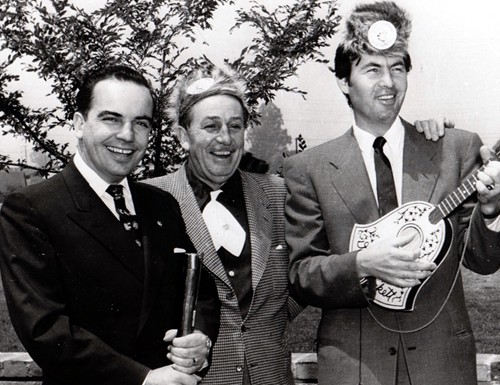Like no other decade, the 1950’s incarnated the process of myth making in a very conspicuous manner into rosy myths in the shadows of unrosy reality that has resulted in some enduring Great Revivals that have tended to get out of hand. The fifties marked the beginning where historical myths could be fabricated before the eyes of the eyewitnesses where writers, pundits and historians realized they could no longer afford the luxury of waiting for their judgements to ripen, as it was, to make sense out of being lost in the great thickets of instant mythology…
Halfway through the fifties, in the summer of 1955, Life ran an article entitled “Nobody in mad with Nobody,” in the text of which, next to photographs of things like two car suburban garages marked “His” and “Hers,” the magazine suggested that just about everybody in the United States was absolutely delighted with himself and his way of living. After all, Life pointed out, the country was not only at peace but was also in a period of unprecedented prosperity-there was full employment, the stock market had recently broken through its highest 1929 levels and was still climbing, and millions of Americans had more money and more material goods than ever. Nirvana, hinted Life, was just around the corner, and it is perhaps this halcyon mid-decade period that echoes with such a resonance of nostalgia and the sentiment of innocence lost within our present conception of that period.

—For those of you who don’t know, or don’t recall, folk hero Davy Crockett was the subject of a three-part series during the first season of Walt Disney’s Disneyland TV show. In those days of three networks—long before cable TV or home video—the audience was enormous, and almost literally overnight, the coonskin-capped backwoodsman became a national phenomenon. His catchy theme song became a best-selling record that remained on the charts for months, and every red-blooded boy in America memorized the lyrics about the man “who killed him a b’ar when he was only three.”
As proof that Disney and company didn’t expect Davy to take off, there were no plans for merchandising when the shows went on the air!—Read More:http://blogs.indiewire.com/leonardmaltin/r.i.p._fess_parker
In 1956, as nobody continued to be mad at nobody, Eisenhower again won the Presidency in a landslide over Stevenson, and under his benign rule during the last years of the decade political and social apathy tended to grow increasingly widespread, as most of the country’s real problems- like poverty, racial inequality, organized crime, juvenile delinquency, the environment, and the rapid deteriortion of the cities- were either totally ignored or swept quietly under carpet, mostly made of synthetic broadloom. ( to be continued)…






 COMMENTS
COMMENTS